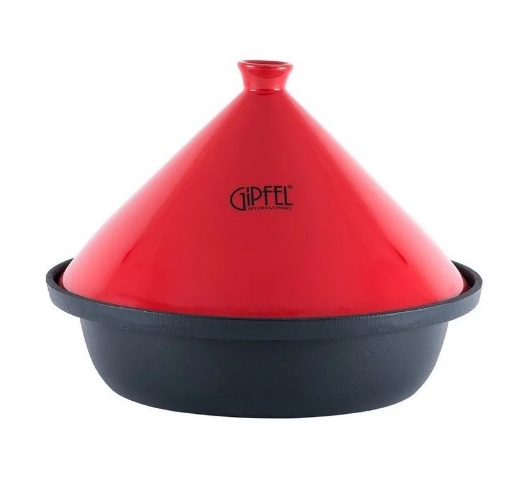Ranking of the best tagines for 2022
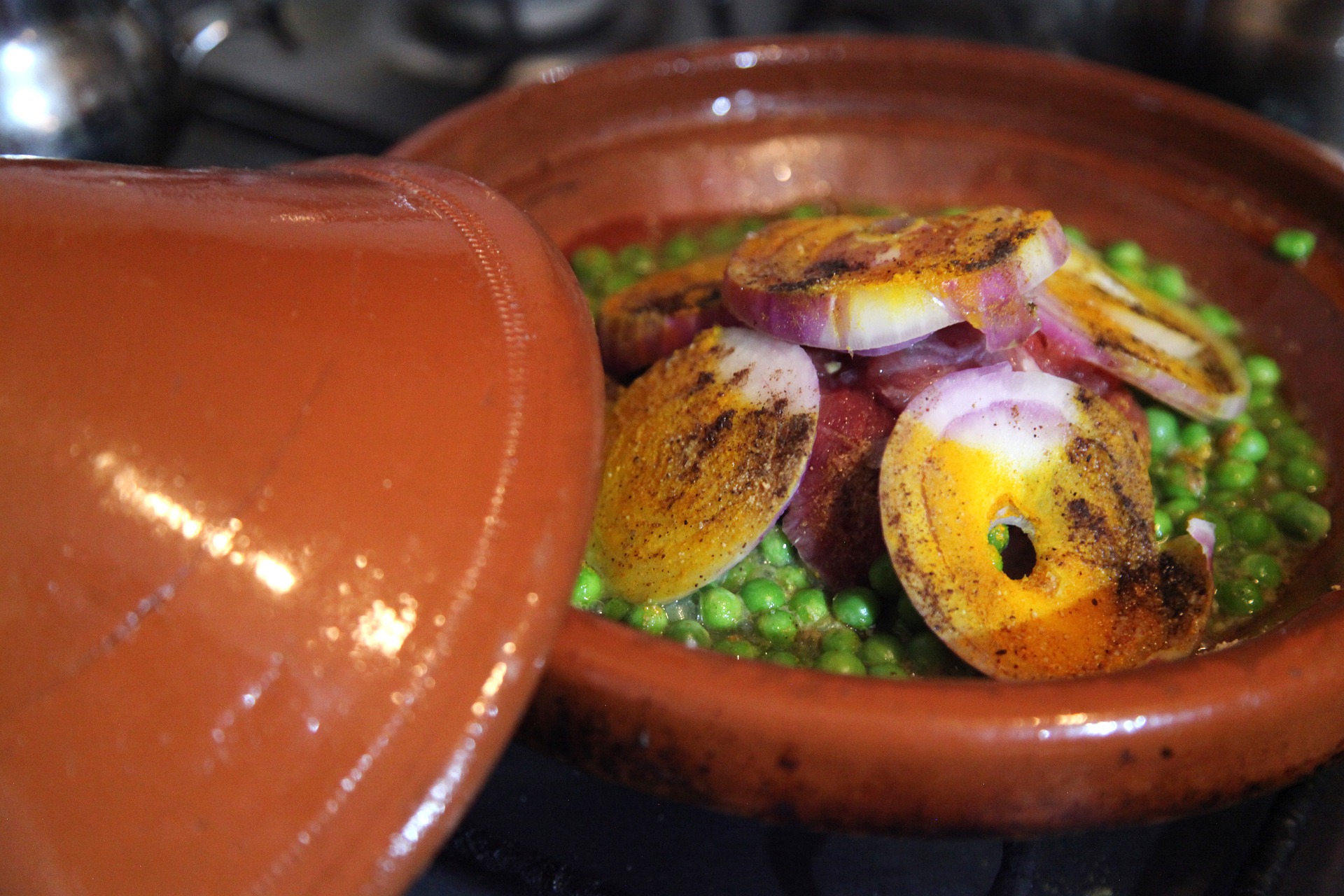
Gone are the days of using food solely to satisfy natural needs. Modern culinary and chef's art implies a wide selection of traditional dishes from all over the world and highly professional self-expression. The enjoyment of taste becomes a daily human need. Never before has a variety of dishes brought from all continents and countries been so abundant, and most importantly - skillfully and competently reproduced in accordance with the "original source". National culinary traditions also include special cutlery and kitchen utensils.
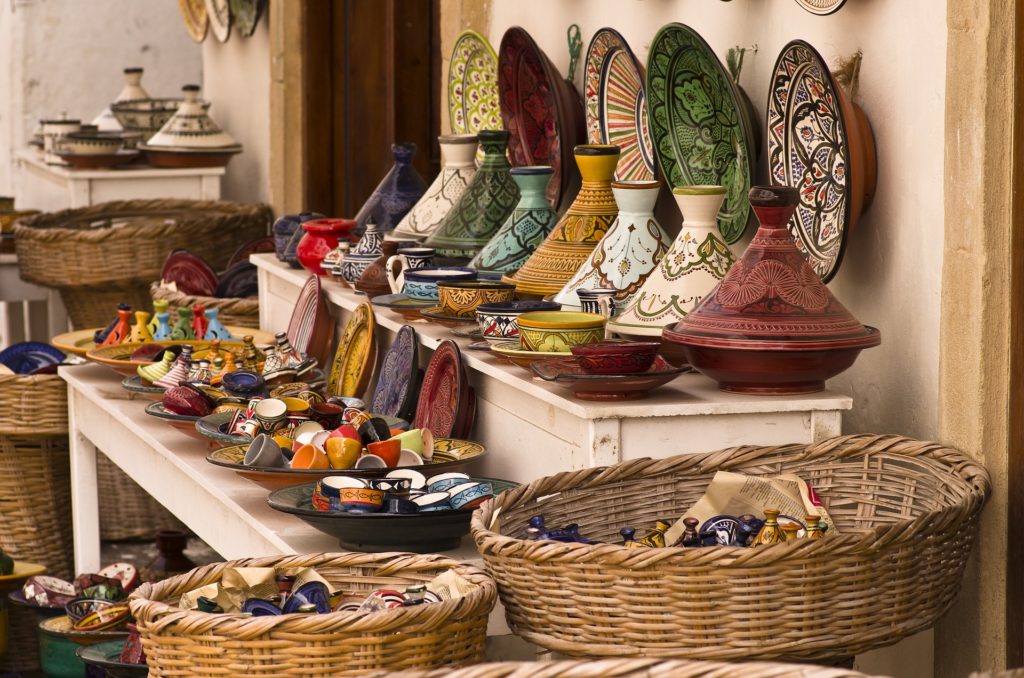
Content
Tagine
A type of cookware, also called a tajine, refers to the type of saucepan, but with one distinctive feature - a high cone-shaped lid. Let's figure out what it is for and how it differs from the pan.
The massive bottom and walls are designed for long-term cooking in its own steam, which is collected under the lid. The steam condenses and flows down the walls in the form of juice, again falling into the process of languishing, eventually turning into a sauce.
Morocco can be considered the birthplace of the tagine, followed by Egypt and African countries. Since ancient times, hot coals have served as a hearth for cooking. The lack of water resources affected cooking, so heat-resistant and moisture-saving vessels were needed.
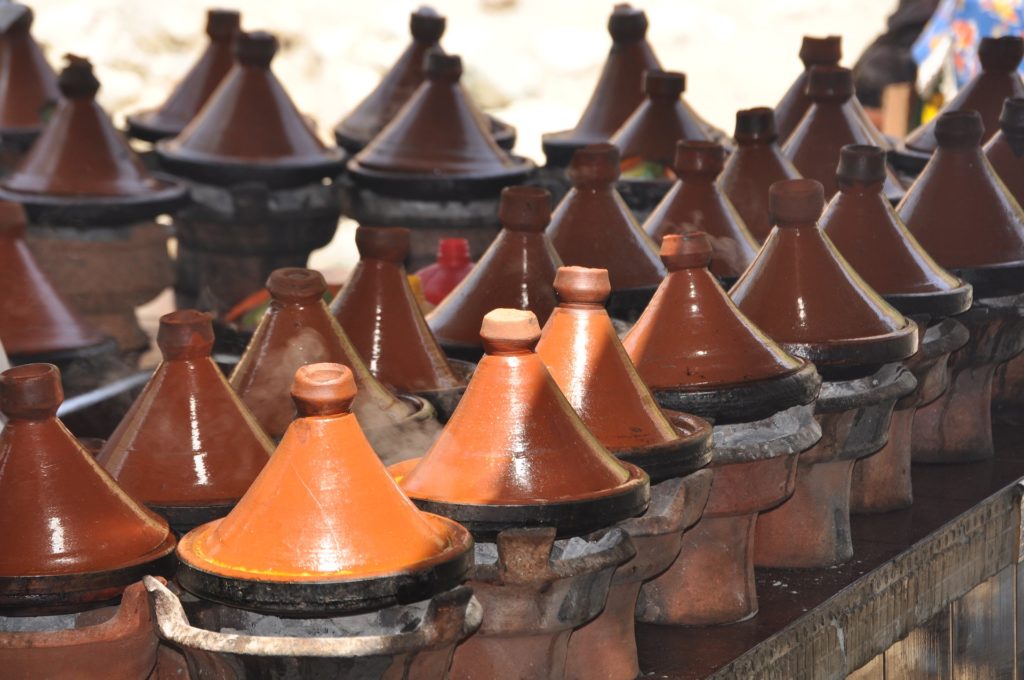
Ingredients
The idea of mixing the main product - meat, poultry or fish with vegetables, lemon, spices and herbs for a long time allows the dish to deeply absorb flavors and blend into a single flavor bouquet.
Cooking time
Versatile tajine keeps lamb tender and juicy when stewed all day long. Fish and chicken dishes require several hours.
Vegetables, fresh fruits, dried fruits and herbs are added towards the end of the cooking process. Vegetarian preparations are prepared quickly and are particularly juicy.
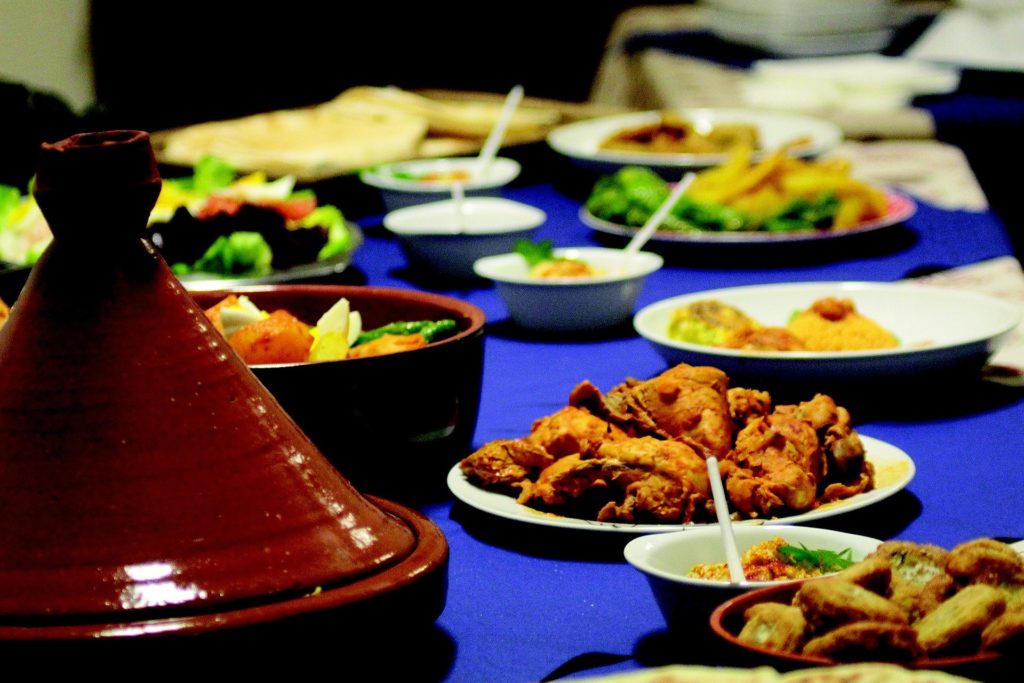
Most often, in tajine they cook:
- fish with vegetables and spices;
- duck with apples, fruits or vegetables;
- chicken with variations of components;
- lamb with couscous or vegetable side dishes.
Cooking by simmering makes the most of the food's own moisture to preserve its beneficial properties.
How to choose a tajine
At the first stage, you should decide on the method and conditions of preparation.
Material
Depending on the aggressiveness of the heating medium, a cast-iron, ceramic or stainless steel tagine is chosen.
The versatility of the cast iron version determines the frequency of its choice, however, unlike the ceramic version, it is impossible to store the finished dish in cast iron cookware.
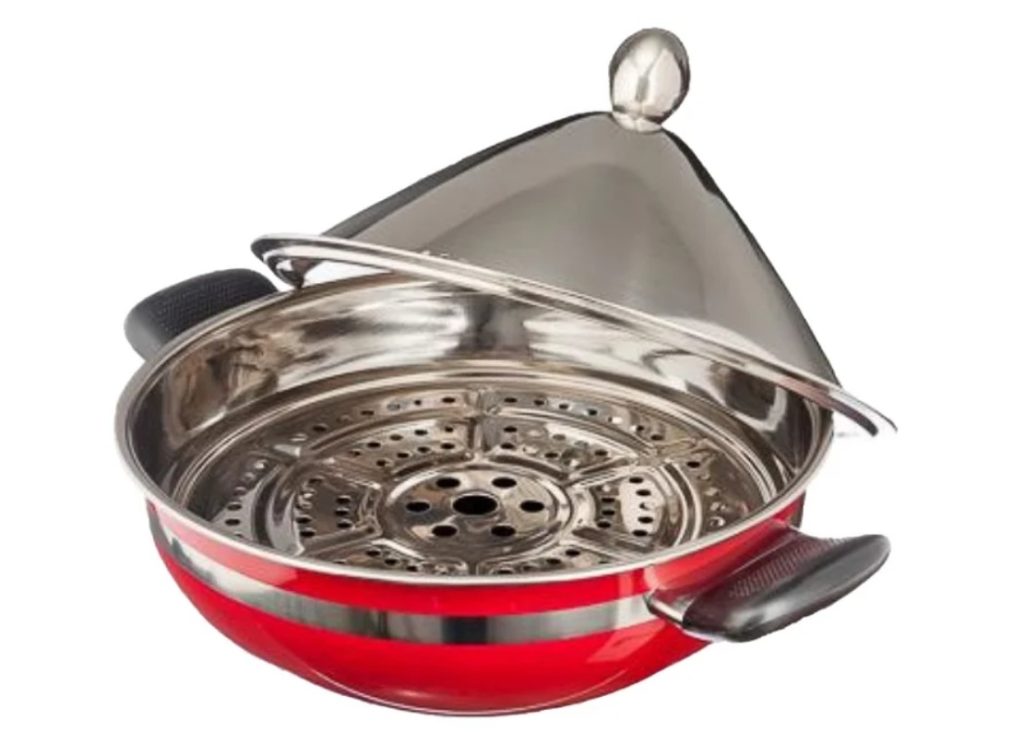
Cast iron cookware should be protected from corrosion and rust, which requires additional care for drying after washing and lubricating the inner walls with oil.
Size and proportions
The height of the conical lid should be almost equal to the diameter of the base bowl.
Chefs use containers with a diameter of 50 cm. For a family of four, the size 27-35 cm is suitable. They are the most popular. For individual paired feasts, dishes of 20-25 cm are enough.
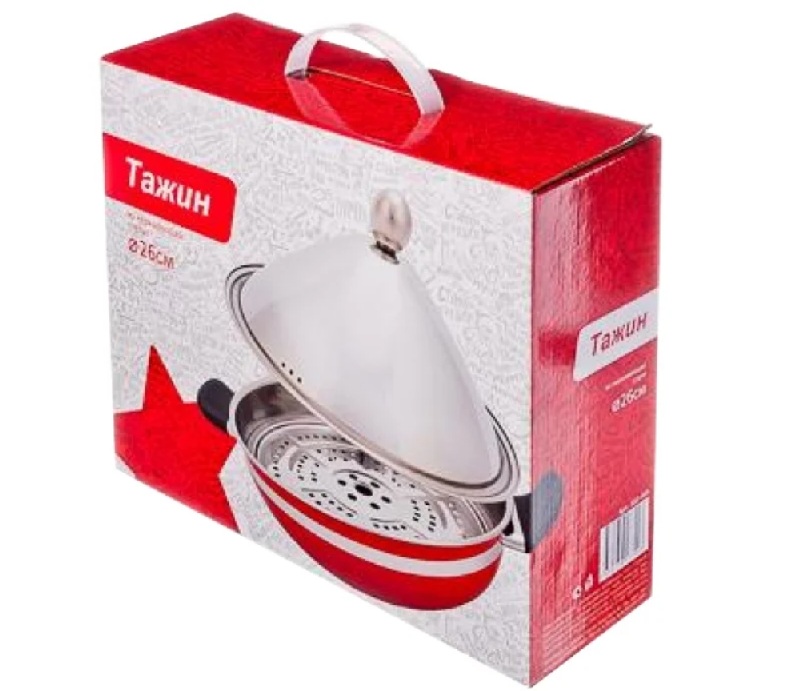
Price
"Representatives" of branded brands cost several tens of thousands of rubles, but the quality of such dishes is excellent.
Budget options do not exceed 3000 rubles in price. It is important that the model does not turn out to be decorative, that is, unsuitable for cooking.
In between the high and low prices, there are numerous high-quality options from unknown manufacturers or medium-quality tagines put on stream.
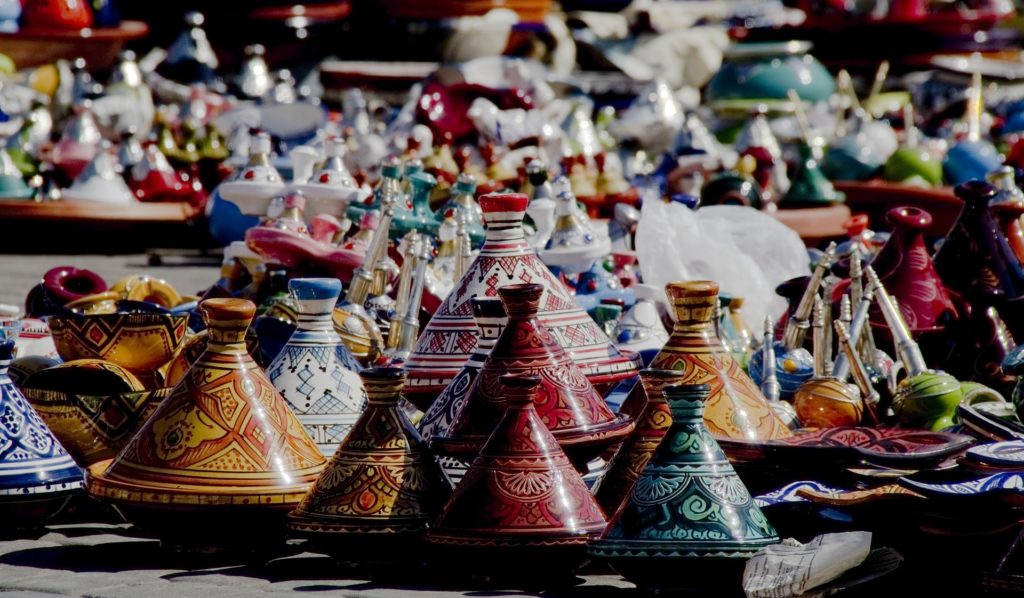
Errors when choosing
Not always a beautiful and bright color component indicates decent quality.
A special manufacturing process requires certain costs for technological steps and good materials. In the case of buying a tagine, reliability criteria must be adhered to, which may require slightly increased costs.Otherwise, the chosen option may be just another pan in the kitchen.
Rating of the best tagines
Ceramic
Emile Henry
The French brand offers customers ceramic tableware that has been handcrafted in Burgundy for 165 years. Initially, ceramics were made by potters in the workshop, but gradually the volumes grew and the quality made such products popular not only in France, but also in Europe. Currently, 50 countries around the world appreciate and are happy to purchase Emile Henry. The dishes are made only from natural materials that do not contain nickel, cadmium and lead.
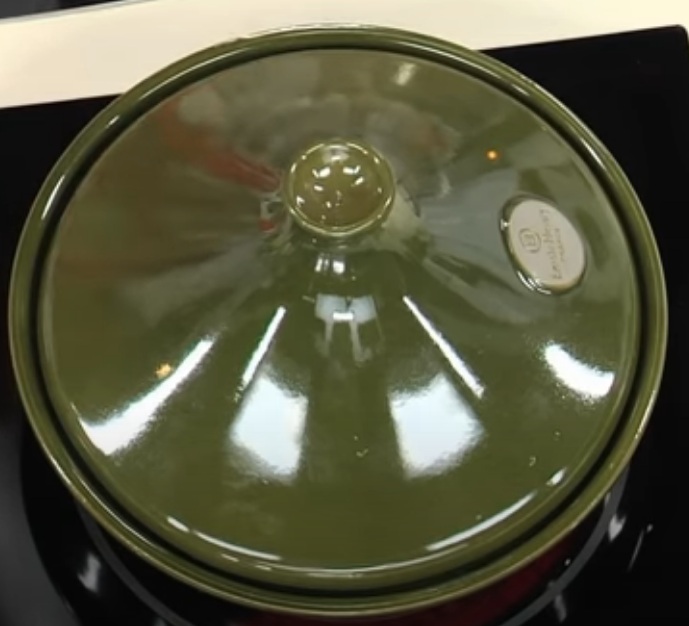
The volume of Emile Henry is 2 liters.
The conical lid repeatedly condenses the steam from the cooked dish, then goes down and soaks the contents of the tagine.
- suitable for professional kitchen;
- there are options for 4, 3 and 3.5 liters;
- available in basalt, basil and pomegranate colors;
- cooking 5-6 servings is allowed;
- it is allowed to wash in the dishwasher;
- environmentally friendly;
- dishes have a rich and aromatic taste;
- can be used on the stovetop and in the oven.
- not identified.
Emile Henry Delight 4 liters
The material for the manufacture of models of this company was innovative ceramics, which made it possible to make the shape of tagines lighter.

- belongs to the class of utensils for healthy cooking;
- there are modifications for 2 and 3.3 liters;
- maximum preservation of the nutrients of the products used;
- the presence of natural non-stick glaze for quick washing;
- long warranty - 5 years;
- manual production;
- ceramics of the latest technology is compatible with various types of thermal heating;
- suitable for cooking in a microwave oven;
- heats up quickly and keeps the temperature for a long time when removed from the heating source;
- no cracks at high heat without content;
- easily perceives a wide range of sharp temperature changes;
- the presence of non-stick properties;
- does not absorb odors;
- does not fade;
- combined with metal accessories;
- stylish design allows you to serve on the table with a beautiful serving.
- missing.
Tajines Classic Regas
Made in Spain for gourmets and connoisseurs of quality, this handcrafted Spanish tajine is made in Spain.

- production material - environmentally friendly natural clay;
- durable enamel coating;
- non-stick effect;
- suitable for ovens, halogen, gas and electric stoves, as well as glass ceramics;
- you can bake bread;
- nice terracotta color;
- optimal diameter (28 cm).
- not detected.
Pomi d'Oro
Cookware from a Chinese manufacturer has a 1 year warranty.

- low price;
- made of stone ceramics;
- Can be washed in the dishwasher;
- suitable for use in ovens and microwaves;
- Beautiful design;
- environmentally friendly production.
- missing.
Esprit de cuisine
This is a tagine of a subsidiary brand of the well-known manufactory Appolia, which began production in the Brittany factory in 1930.

- excellent combination of raspberry and black colors;
- excellent French quality based on tradition;
- volume 3 liters;
- popular diameter (32 cm) is designed for 6 servings;
- is made according to a unique method developed specifically for ceramics.
- missing.
Gzhel pottery
The ceramic case with a lid of this model is made according to the method of ancient Russian technologies. Today, the same clay is used as in the 14th century.
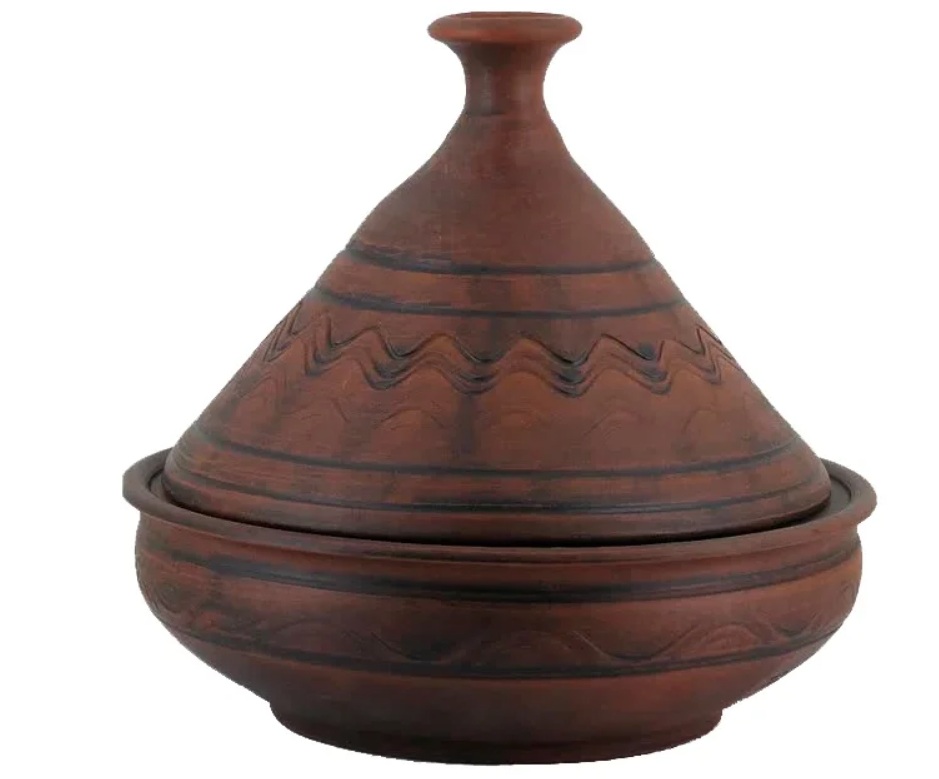
- double heat treatment stage at 1000 and 350°C;
- in the interval between treatments, the products are impregnated with milk for a pleasant color and reduction of porosity;
- to be used in Russian ovens, ovens and microwave ovens;
- made with a potter's wheel;
- the presence of a hole in the cone of the lid for steam bleed;
- multifunctionality: can be used as a salad bowl or for baking as a form;
- diameter 24 cm - convenient for preparing several servings;
- height 26 cm;
- acceptable price.
- cannot be washed in the dishwasher.
| Ceramics | |||||
|---|---|---|---|---|---|
| Emile Henry | Emile Henry Delight | Pomi d'Oro | |||
| Diameter cm | |||||
| bottom | 18 | 33 | - | ||
| general | 27 | 33.5 | 28 | ||
| Volume, liter | 2 | 4 | |||
| Weight, grams | 2600 | 3630 | 2376 | ||
| Height, cm | |||||
| without cover | 7.5 | - | - | ||
| with lid | 20 | 23 | 20.5 |
Cast iron tagines
This type is suitable for use with gas stoves, ovens and barbecues. Cast iron is a ferromagnetic metal, so such cookware can be freely used on induction cookers.

There are 2 types of cast iron tagines:
- Cast iron top and bottom;
- Cast iron and ceramic lid.
Le Creuset
The French brand originates in 1925. This company comes from the small town of Frenoy-le-Grand. Cast iron and ceramic cookware products of this brand have their fans all over the world.
Chefs often prefer Le Creuset.

Among the recognized leaders in brand sales:
- Collectible sets of three-layer stainless steel.
- Ceramics.
- Non-stick frying pans.
- Enamelled cast iron cookware.
Casting
Cast iron casting is performed using a disposable sand mold, each of which is separated from the next cell by 3.5 mm. After the cast-iron casting hardens, the original form is destroyed, so the repetition of tagines is excluded. Next comes the cleaning and processing of the surfaces of the dishes.
The composition includes:
- ½ share of pure cast iron.
- 15% is a mixture of minerals.
- 35% - carbon steel with iron.
Glazing
The ceramic lid coating process involves dipping into a bath of transparent glaze sealant to seal off liquid and food.
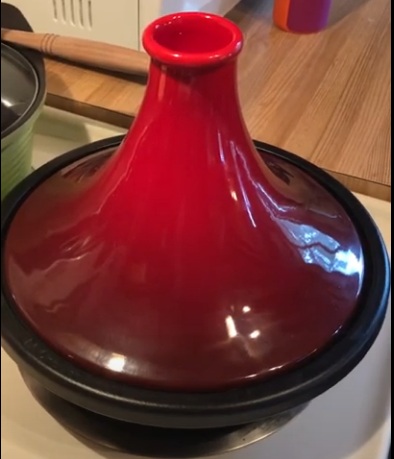
Then the procedure is repeated, but with an opaque glaze.
tinting
The enamel coating of the colored pigment is applied by spraying. To fix the layer, the cover is fired and then polished.
Le Creuset orange 27
Moroccan dishes not only make meat or fish juicy and soft, but also fill them with oriental aromas of spices.
- suitable for all types of heating, including induction;
- suitable for marinating and storing raw foods;
- good combination of cast iron and ceramics;
- special durability of materials;
- French quality;
- fast and delicious food.
- cracks in the enamel are possible with strong impacts or falls.
Gipfel
The German brand with an expert class since 1997 has brought to the market tableware and cutlery in accordance with the quality of the famous German guilds.
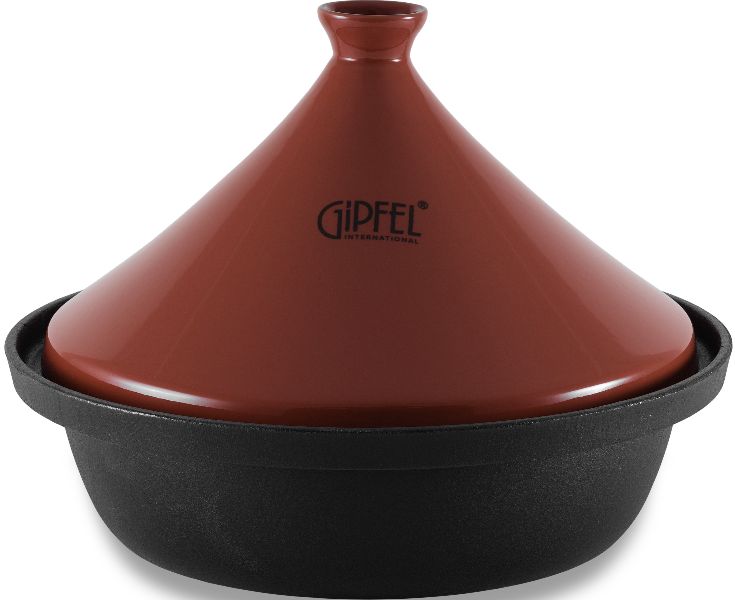
The famous project De Lux introduced to the market a series made of five-layer premium stainless steel.
Cast iron pots with ceramic lids are the perfect combination for juicy roasting and stewing.
- universal diameter (30 cm);
- you can choose red, black, black and white or combined colors;
- there are models with ancient Egyptian symbols on the ceramic lid - it looks very impressive;
- unsurpassed German quality;
- best value for money.
- not detected.
Staub
The French brand is one of the leading manufacturers of ceramic and cast iron kitchen utensils.
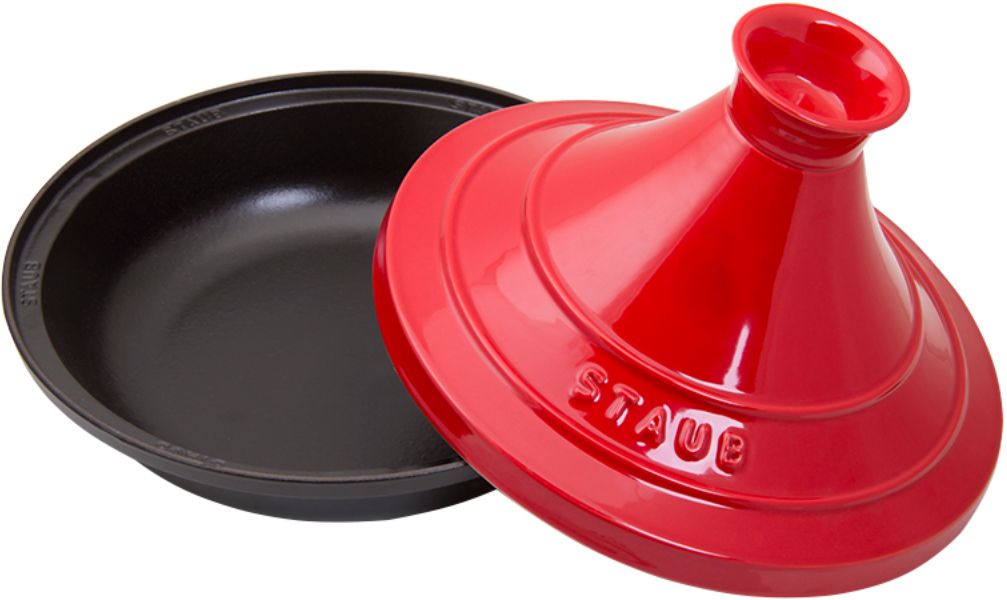
Laboratory studies have made it possible to change the composition of the metal.
Cast iron version with a diameter of 28 cm is made in cream and black.
- quality and style;
- new technology and composition of the enamel coating;
- suitable for all types of heating surfaces;
- acceptable price;
- total volume - 3.5 liters.
- missing.
| Cast iron types | |||||
|---|---|---|---|---|---|
| Le Creuset orange 27 | Gipfel Amey | ||||
| Diameter, cm: | |||||
| bottom | 18 | - | |||
| general | 27 | 30 | |||
| Volume, liter | 2 | ||||
| Weight, grams | 4000 | 5700 | |||
| Height, cm: | |||||
| without cover | 7 | - | |||
| with ceramic lid | 21.1 | 27 |
Stainless steel tagines
Scanpan
This is a global premium Danish brand. The company's products are distinguished by a long service life and excellent design.
The photo shows a combined version made of stainless steel and ceramics:
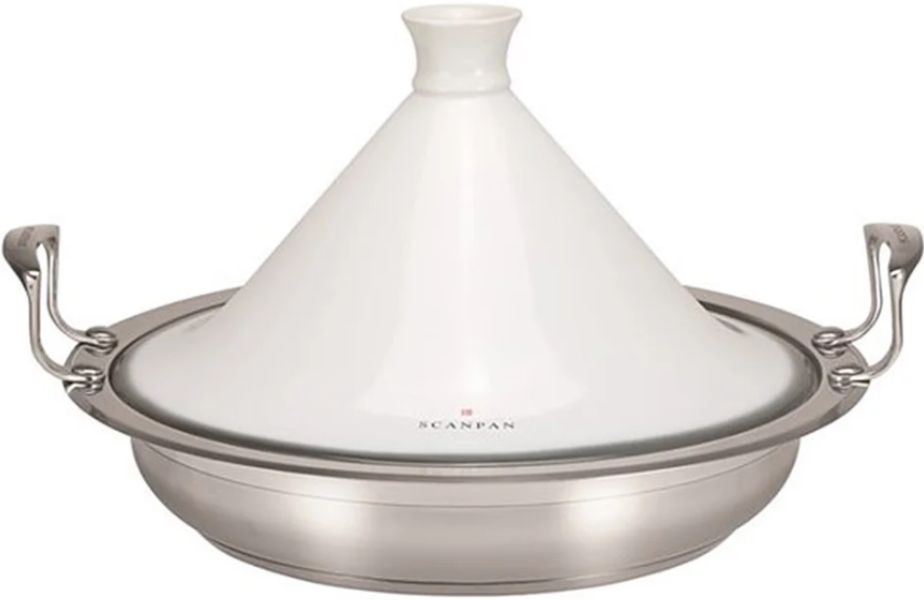
- durability and high quality;
- unique coating that protects against chemicals;
- the latest production technologies;
- exclusive non-stick coating;
- made of stainless steel alloy with aluminum and magnetic stainless steel;
- cone-shaped ceramic glazed cover;
- suitable for use in ovens;
- can be cooked on induction cookers;
- stunning design;
- high functionality;
- dishwasher safe;
- special design of the rim without loss of water during transfusion;
- maintains heating to 260 °C.
- not identified.
VETTA
This is a good budget-class kitchenware from a Chinese manufacturer.
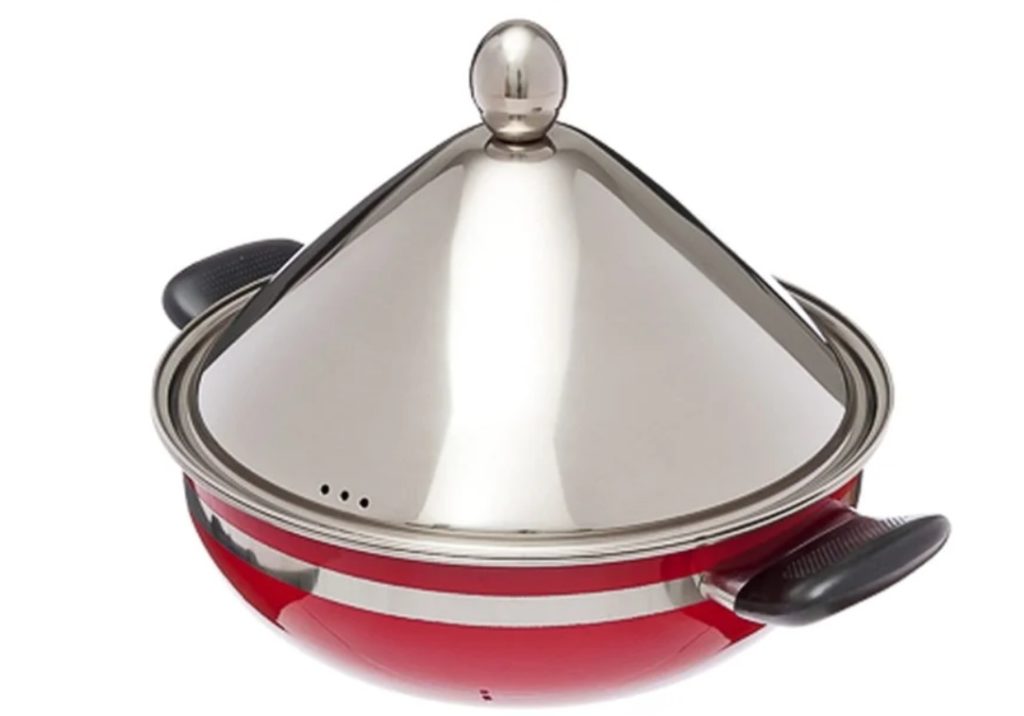
- convenient to use;
- the technology of cone vapor condensation is observed;
- suitable for pre-roasting and subsequent stewing;
- frying without oil on water and steam;
- great tasting food.
- users note insufficient bottom thickness.
| Stainless steel | |||||
|---|---|---|---|---|---|
| Scanpan | VETTA | ||||
| Diameter, cm: | |||||
| bottom | 26.3 | 20 | |||
| general | 32 | 26 | |||
| Volume, liter | |||||
| Weight, grams | 4980 | ||||
| Height, cm: | |||||
| without cover | - | - | |||
| with ceramic lid | 24 | ||||
| Bottom, thickness, mm | 6.4 | 52 |
Berlinger House
This well-known Hungarian brand, which conquered Europe and the whole world, is now confidently expanding sales in Russia.

The tagine is made using the latest technology from high quality materials.
- brand products are positioned for people leading a healthy lifestyle;
- combination of high quality with exquisite design;
- environmental friendliness of materials;
- safety in use;
- made of cast aluminum;
- enamel coating;
- ceramic cover;
- democratic price;
- aquamarine color.
- not identified.
Conclusion
Tajine is also the name of a Moroccan dish that is made from fish, meat, poultry or seafood.
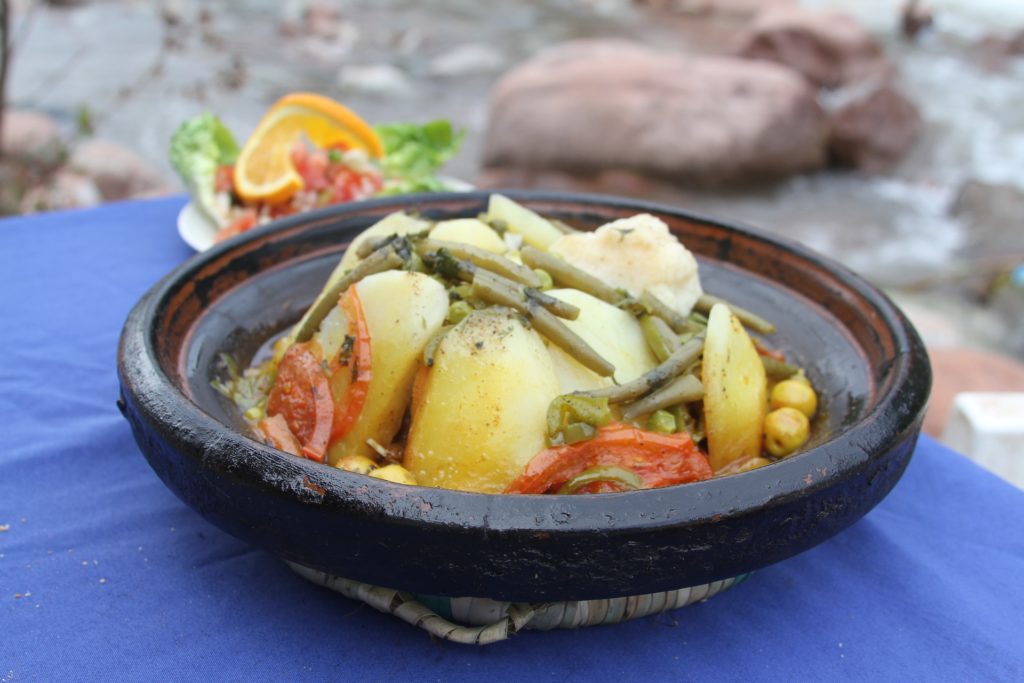
In the process of cooking, vegetables and spices are necessarily added to the tagine. After massive travels to the Arab countries, many fans of this simple and fragrant national dish appeared. There is no unequivocal recipe, because real culinary art is a creative impulse, flair, taste and talent.Each family can create their own unique author's recipe, because the very form of tajine speaks of mystery, longevity and sophistication.
new entries
Categories
Useful
Popular Articles
-

Top ranking of the best and cheapest scooters up to 50cc in 2022
Views: 131666 -

Rating of the best soundproofing materials for an apartment in 2022
Views: 127703 -

Rating of cheap analogues of expensive medicines for flu and colds for 2022
Views: 124529 -

The best men's sneakers in 2022
Views: 124048 -

The Best Complex Vitamins in 2022
Views: 121952 -

Top ranking of the best smartwatches 2022 - price-quality ratio
Views: 114988 -

The best paint for gray hair - top rating 2022
Views: 113405 -

Ranking of the best wood paints for interior work in 2022
Views: 110332 -

Rating of the best spinning reels in 2022
Views: 105339 -

Ranking of the best sex dolls for men for 2022
Views: 104378 -

Ranking of the best action cameras from China in 2022
Views: 102227 -

The most effective calcium preparations for adults and children in 2022
Views: 102020
